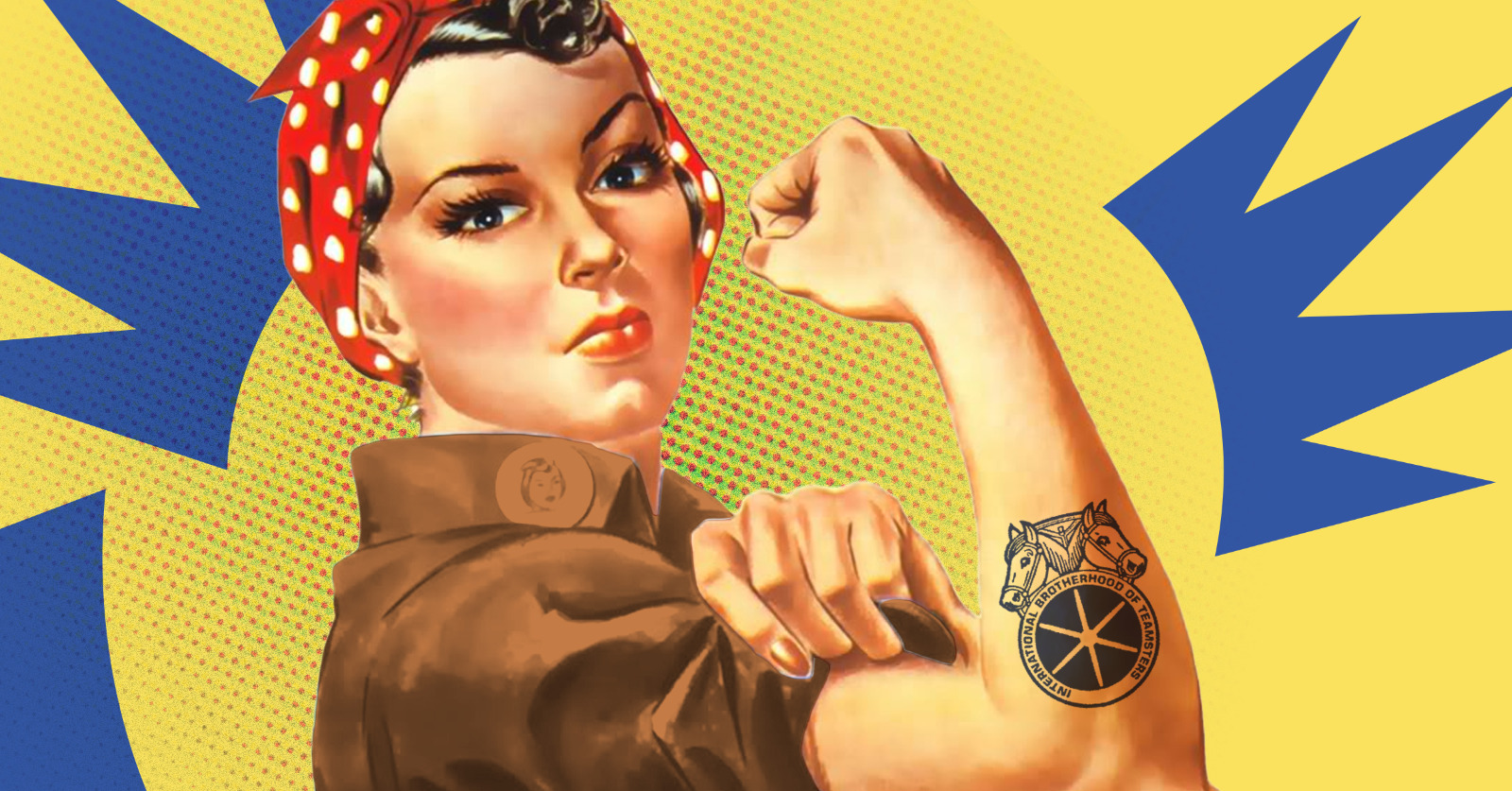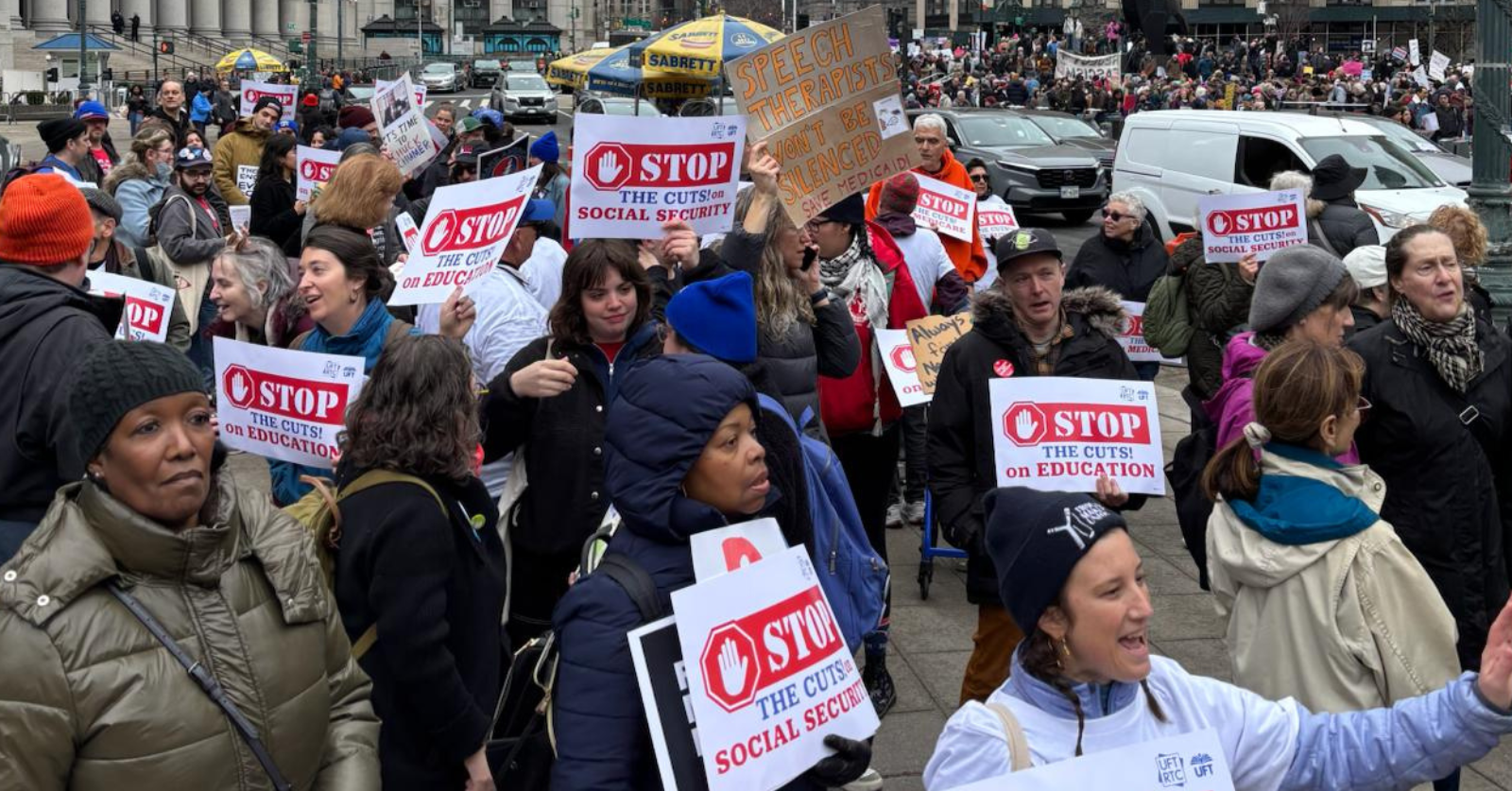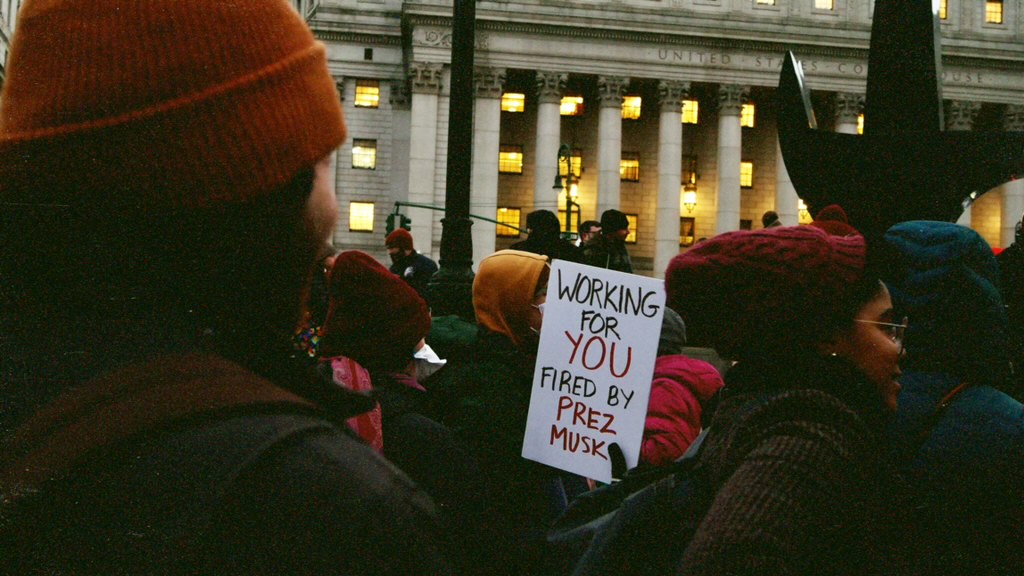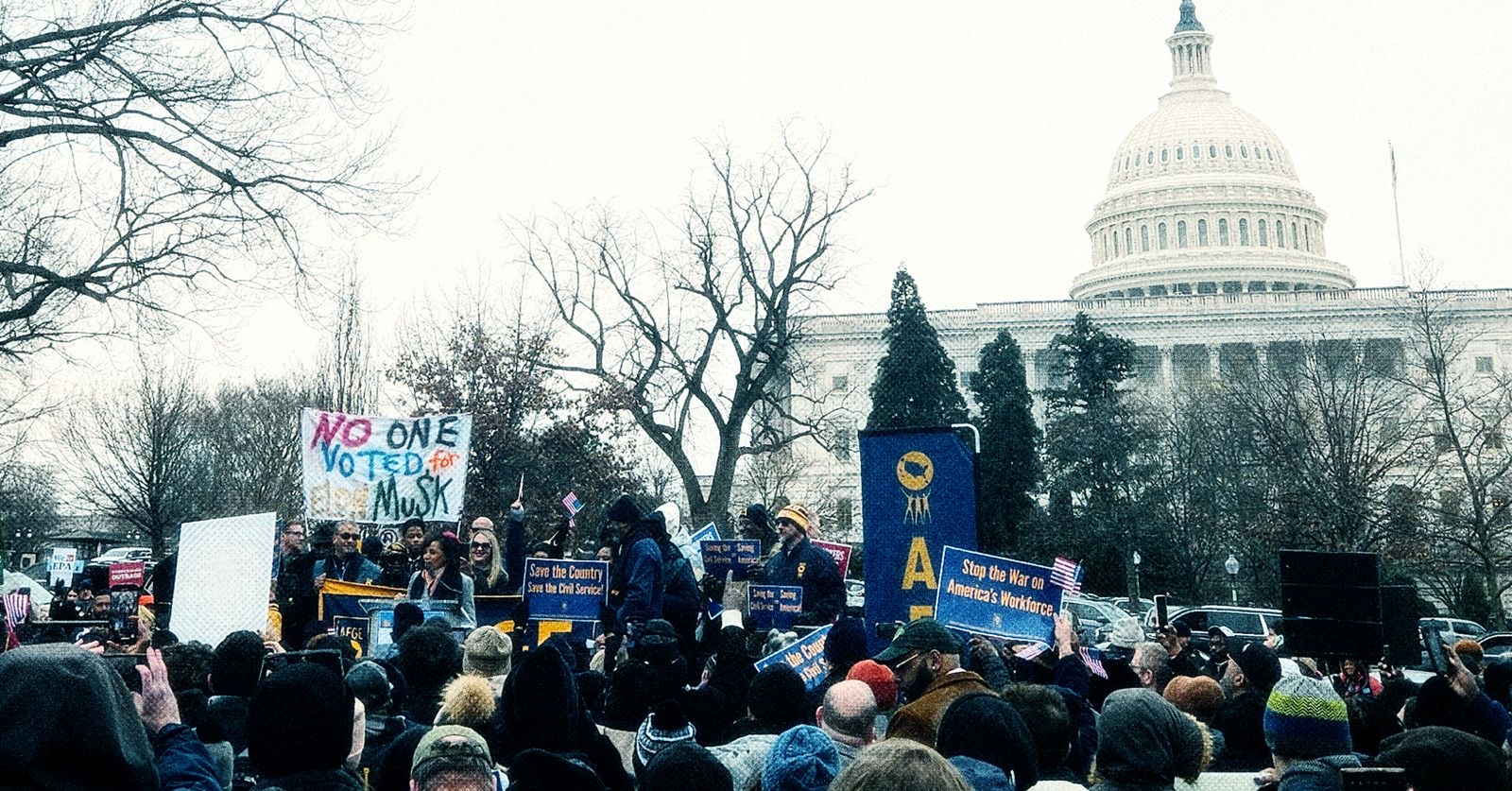UPS Teamsters voted by 86% to ratify a new National Master Agreement August 22, with a record 58% turnout, capping off a year-long intensive contract campaign that engaged members on a level not seen in decades and building a strike threat through escalating actions.
The new contract includes major victories in most of the areas under negotiation. Base part-time worker pay will increase by more than 30%, with many workers receiving raises higher than 50% over the life of the five-year contract. The second-tier 22.4 driver position was eliminated, setting all drivers on a pay progression with a top rate of $49/hour by 2028. Greater monetary penalties were won for forced overtime violations, A/C in trucks was established (though it will slowly be rolled out in the coming years), and a forced sixth day of work for drivers was ended.
Most significantly, these gains were not handed down from above, but achieved through a mass rank-and-file contract campaign, involving surveys, pledge cards, rallies, and practice picketing, whereby tens of thousands of workers raised the expectations and confidence of themselves and their coworkers, and developed as organizers and leaders themselves. This was a glimpse of the sort of mass rank-and-file activity the labor movement will need a lot more of to halt its ongoing decline.
DSA members supported and participated in this contract fight at a deep level, through DSA’s national Strike Ready campaign, which was the largest and most cohesive national project since the 2020 Bernie campaign. This campaign, and the less visible years of National Labor Commission logistics industry organizing that preceded it, offer a compelling model for future socialist labor work, while highlighting the challenges and more long-term goals we will need to take up to help rebuild the labor movement.
Organize Logistics
For more than four years, DSA members who work at UPS have been organizing ourselves into an industry network. Our network brings together DSA members who already worked in the industry, DSA members who got hired recently at UPS, and longtime UPS Teamsters who more recently joined DSA, to discuss politics and help each other become better workplace organizers. While we are a small force compared to our 1.4 million-member union, or even the broader reform movement Teamsters for a Democratic Union, we do our best to participate within these broader movements as stewards, workplace activists, and leaders, pushing our union toward a more democratic and class struggle orientation over the long haul.
As this network has grown, it’s done political education with a broader layer of DSA members. Starting in 2021, DSA members in the logistics industry formed the Logistics Committee through the National Labor Commission and began giving educational presentations to more than 55 DSA and YDSA chapters around the country, talking with members about the importance of rank-and-file labor organizing and helping them get strategic jobs in the logistics industry. In several chapters where there were already Labor Branches or Labor Working Groups, we collaborated to help develop more steady and expansive logistics jobs pipeline programs, alongside other strategic industry focuses these chapters democratically decided on. This educational work about labor laid the groundwork for future solidarity and rank-and-file organizing, and grew our network.
Strike Ready
Building an industry network and doing educational work around the country laid the groundwork for the national DSA Strike Ready Campaign. The goal was to mobilize our entire organization in support of UPS Teamsters’ contract fight, help UPS workers achieve the largest victory possible, and demonstrate socialist labor solidarity. In this goal, we were massively successful. In a short six months this campaign engaged 110 chapters and more than 250 solidarity captains in solidarity work: passing Strike Ready resolutions; fundraising for the national DSA Labor Solidarity Fund; engaging in coalition canvasses of the public with Teamsters locals and other organizations and tabling with solidarity pledge cards; turning members out to support rallies and practice pickets. We also organized 90 DSA electeds to sign a letter in support of the Teamsters’ demands. DSAers were eager and ready to join the picket lines if a strike had been called.
These solidarity efforts bolstered the confidence, visibility, and strength of rank-and-file UPSers’ contract campaign efforts and demonstrated that DSA will stand shoulder to shoulder with workers in their struggles against the boss. Members built relationships with rank-and-file Teamsters and raised the profile of DSA and socialism in the labor movement. The DSA UPS network was able to help lead this campaign in a strategic and sensitive manner, due to our years of slow organization-building and educational work. Solidarity campaigns are crucial, but they’re stronger and able to reach deeper when we have industry networks in place that allow rank-and-file DSA members to help lead this work, as we had with Strike Ready.
Organizing for the Long Haul
As socialists, we know that the strike weapon is one of the most powerful tactics workers can use to leverage their collective power against employers, especially when they are well positioned to win. Furthermore, strikes have a galvanizing effect on broader working class consciousness and militancy, which is crucial in a moment when the labor movement is still on the decline, despite record union favorability among 71% of the public.
Many on the left and in the broader labor movement were hoping for a strike at UPS, because we hypothesized that UPS workers could win more from a strike and that achieving a victory in this manner would help develop organization, leadership, and rank-and-file self-confidence that would move the labor movement in a more democratic and ambitious direction. In a strike at UPS 340,000 workers would have blanketed the country in pickets and marches in the largest strike in decades, and after a victory, millions around the country would viscerally know that when we are well organized as workers and fight, we can win tremendous gains.
At a moment when the labor movement is attempting to claw back a foothold after decades of retreat, seriously aiming to catalyze mass consciousness transformation like this isn’t a fantasy but a necessity. The experience also would have continued the leadership development, raised expectations, and union involvement of existing Teamsters, which did happen through the contract campaign on a smaller scale. But hopes don’t make history — people do, acting in circumstances not of our choosing. And at UPS this year, a strike wasn’t in the cards, for a couple of reasons.
First and foremost, Teamsters President Sean O’Brien raised members’ expectations to new heights, but he was also clear from the beginning that while the Teamsters wouldn’t be afraid to strike, he didn’t want to, and that “UPS is choosing to strike themselves” if they didn’t agree to the Teamsters’ demands. In the end, O’Brien kept his word, winning most major demands he had promised to win, and unsurprisingly, UPS chose not to open itself up to a strike which would have cost billions of dollars a week. Members were certainly ready to strike, if union leaders had led them in that direction, but that would have required O’Brien to value the development of member consciousness, and the broader positive effects on the labor movement, in addition to potentially winning more contract gains, over the risks and costs of a strike. He did not make that call, but it doesn’t make socialists wrong for disagreeing.
Second was the fact that while rank-and-file UPS Teamsters voted by a 97% margin to authorize a strike if necessary, the majority still ultimately preferred not to strike, if big contract gains could be won without one, as evinced by the overwhelming yes vote on the contract. This is an understandable position for workers who have been disorganized and on the defensive under Hoffa Jr.’s misleadership for decades, as there are real sacrifices and risks that come with a strike. There’s a short-term loss of pay even with strike benefits; the draining of our strike fund in a few weeks; a risk of permanent lost volume to competition (and therefore potential layoffs that could last months after a strike would have ended); and the risk, however small, of losing a strike and coming back to the table having made these sacrifices for nothing.
In some contexts, as in the 2018 UPS Teamsters’ “vote no” movement, a majority may be willing to go against the strategy of union leadership, if they feel more could be won, and if an alternative base of rank-and-file leadership is willing to push in another direction. This did not occur in 2023, because the new, more militant reform leadership under O’Brien was able to win significant gains from a strike threat (unlike the concessionary contract Hoffa Jr. negotiated in 2018), and because members felt their new leadership did in fact adequately represent their interests. Developing an understanding of strike power often takes either direct experience or intensive leadership and education, which doesn’t happen overnight, or even in a year.
That being said, there was a militant minority of members who did see the inherent value of a strike, such as Local 25 steward Greg Kerwood, who wrote on a Teamsters Facebook page:
“It has become almost cliche to say that nobody wants a strike, as if it were somehow uncouth to stand up for one’s humanity without a qualifier. But wanting a strike is truly not the question. The question, rather, is do we NEED a strike? And the answer is an unequivocal YES! We NEED a strike to unite our members at UPS, and our Teamsters Union as a whole. We NEED a strike to create a generation of militant Unionists, whose education will be the picket line, and whose graduation will be the launch of a new Labor movement. We NEED a strike to create the bonds that hold Labor together, that unite workers; those that can only be forged in the furnace of workplace action. We NEED a strike to energize the entire Labor movement; to show workers that they CAN stand up, that they CAN fight back, and that they CAN win… Make no mistake, striking a multibillion dollar corporation is not for the faint of heart. It requires strength, commitment and a willingness to sacrifice in the short term for long term gain… [but] history is made by those who attempt the impossible, who fight the unwinnable, who believe the unbelievable; who ignore the voices of the naysayers, the pundits, the experts. This is OUR time to make history, to right the wrongs of the last four decades, and to return the rewards of labor to those who create them.”
Nonetheless, this time around, members with such a vision remained a minority.
At UPS in 2023 there was some distance between an optimal outcome for developing working class consciousness and power for the long haul, and across society as a whole — always socialists’ priorities — and the reality of a compromise that these rank-and-file workers were willing to accept at this juncture. This is no different from the manifold contradictions we face as we organize to rebuild the collective aspirations of the working class, towards not only winning a bigger paycheck or winning an election, but towards truly transforming our society so that working people can democratically run it, in our vision of democratic socialism.
Only 36% of people support socialism in the U.S. today, but that number isn’t static; it’s something we grow through organizing. And likewise, the layer of workers in the labor movement who are willing to fight for more, develop a class-wide vision, and strike isn’t static either. We will continue to build that militant minority through long-term organizing, at UPS and across the economy. That slow work of organizing is the core of the rank-and-file strategy. Our work would have been boosted a lot by a strike, because people learn through heightened struggle and through seeing their own power at work, but regardless we will continue building power through the struggle on the shop floor and in future contract fights.
What the Strike Ready campaign and the DSA Logistics network organizing demonstrated is that we can in fact move the needle on this process of class organization and political consciousness formation, through steady, long-term work guided by strategic analysis. By combining industry network organizing with external solidarity support, we were able to strengthen the reform process and contract fight. If DSA members in other industries can cohere national industry networks and develop strategic visions to connect the socialist movement and the labor movement in their own contexts, we can expand this successful rank-and-file strategy organizing across the labor movement. Only through that steady, difficult, and often invisible work can we change the conditions in which history is made.




